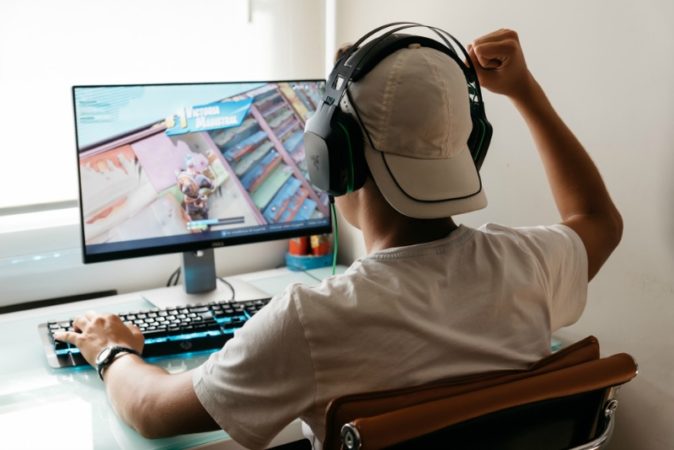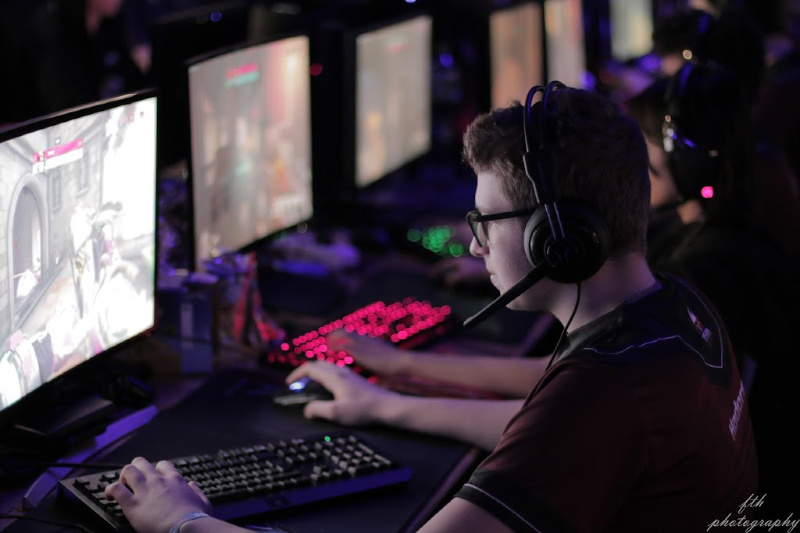Utter the word “Fortnite” in the company of parents, and you are very likely to hear the word “addicted” come up, usually in a semi-joking way.
But, it turns out, the “addiction” claim with regards to Fortnite may carry some legitimate weight. The wildly popular video game is spurring addiction-like symptoms in an alarming number of players, many of them children and teenagers.

Fortnite was first released in 2017 and has become one of the most popular video games
First released by Epic Games Inc in September of 2017, Fortnite began with Battle Royale, a free-to-play player-versus-player setup wherein up to 100 players compete against each other to be the last person standing in a continuously shrinking play area.
Save the World is another mode in which players work together to defeat zombie-like characters, but Battle Royale remains the most popular mode, amassing over 125 million players its first year and continuing to earn hundreds of millions of dollars per month.
Creative mode, Fortnite’s newest mode in which players can build their own worlds, is currently available for those who buy the season seven Battle Pass and will be available for everyone else December 13.
According to Bloomberg, behavioral specialists dealing with kids and gaming addiction claim Fortnite is “like heroin,” because it’s so difficult to let go of the game once hooked. Surveys done in the UK have even indicated that some marriages have ended at least in part because of the game.
Even professional athletes are not immune. The NHL’s Vancouver Canucks had to prohibit Fortnite on the road because players were missing or showing up late to important meetings and events. Pro baseball players have been known to hook up the game to their stadium’s Jumbotron and play during practice breaks.
So, if grown-ups can’t manage to put down the controller, what does that mean for our kids? According to child psychologist Randy Kulman, in Wakefield, Rhode Island, more and more parents are seeking help because of their kids’ gaming addictions. Of the 120 kids Kulman worked with in camps over the summer, about half were playing Fortnite excessively.
But haven’t we heard this before? Haven’t parents been lamenting the intoxicating, addictive nature of video games literally for decades? I’m sure we all remember the ominous warnings from elders when they saw us with an Atari controller in our hands. (And did anyone besides me have Tetris dreams?)
But Fortnite is a whole other beast. It differs from other games in several unique ways: it’s free, it’s accessible on a range of devices from phones to computers to gaming consoles, and it engages players in a manner that commits them to the end. 100 players begin together and play until only one remains. If you get up from the game, you lose. Fortnite does not have a pause button.
This built-in deterrent from walking away from the game seems to be the chief source of conflict and addiction. Players will sit for extended periods to the exclusion of other life activities, as long as it means they can get a little further in their game. Sometimes the obsession gets to the point that parents feel compelled to send their kids to rehab.
In addition, Fortnite, though free, offers add-ons for an additional cost—“skins” that enhance the game. Parents have reported losing hundreds of dollars when their game-obsessed kids add enhancements to the game with a credit card previously linked to the gaming account and then forgotten.
For the first time this year, the World Health Organization included “gaming disorder” in its International Classification of Diseases, marked by “impaired control over gaming, increasing priority given to gaming over other activities to the extent that gaming takes precedence over other interests and daily activities, and continuation or escalation of gaming despite the occurrence of negative consequences.
”The inclusion could assist parents in seeking treatment for their kids since they may qualify for reimbursement from their insurance companies.
There is some controversy among psychologists as to whether gaming disorder constitutes an actual chemical addiction in the same way heroin is addictive. But some experts theorize that playing and winning video games may trigger a release of dopamine, a chemical in the brain that lifts mood and can play a role in other addictive activities such as drug abuse or gambling.
Experts predict games will only become more adept at hooking players, so parents should be aware and on the lookout for addictive behaviors in kids and teens, such as unwillingness to participate in other activities besides gaming, lack of social involvement outside of the game, increased aggression when not playing the game, and using the game as an escape or diversion from unpleasant thoughts or tasks.
Treatment involves a focus on behavioral modification, including removal of the client from the gaming itself and then navigating the client away from the obsessive thought patterns and habits that contribute to the addiction.
This isn’t to say parents should ban video games or even Fortnite in their homes. The point is, reasonable limits need to be set and adhered to, with consistent consequences when they’re not. If parents can maintain those boundaries, hopefully the only kind of gaming happening at home will be the kind everyone feels comfortable walking away from.
Related:
It’s Still Possible for Teens To Play Sports for Fun, Right?



